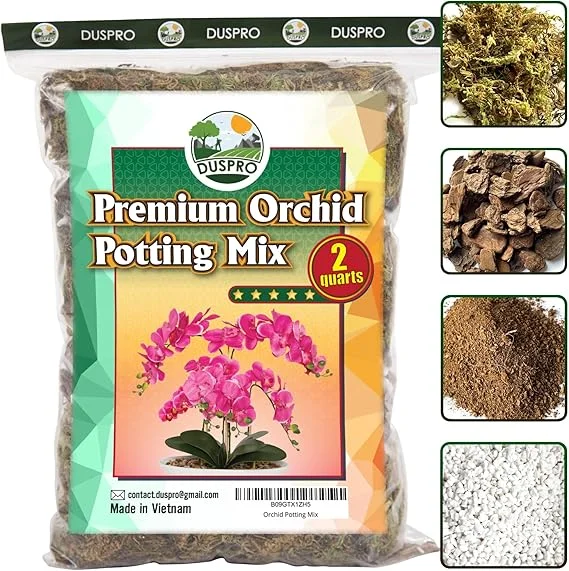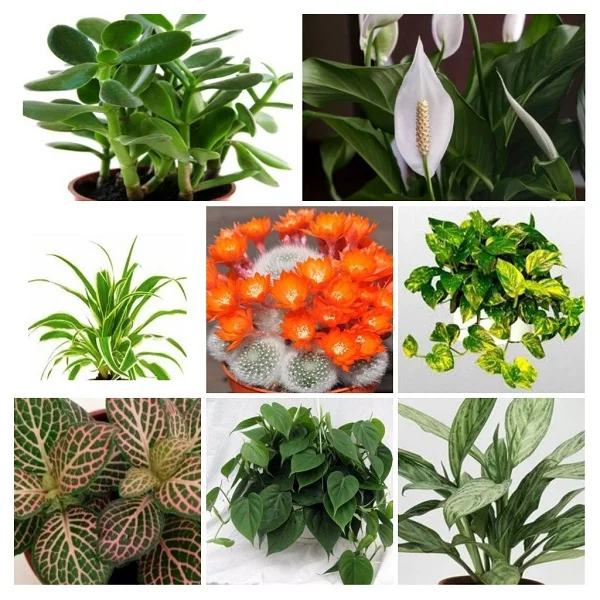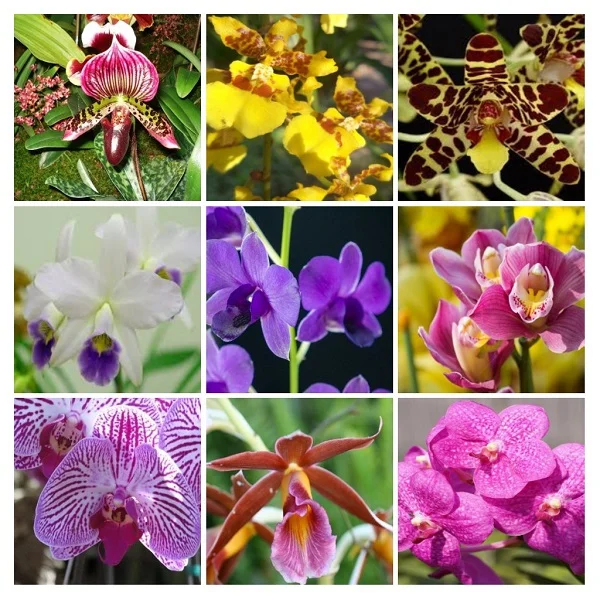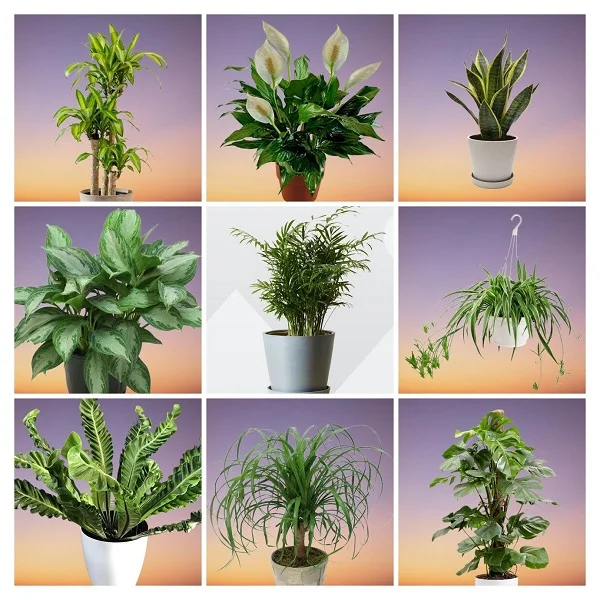How to Grow, Care and Propagate Blushing Bromeliads (Neoregelia Bromeliads)
Some links in this post may be affiliate links
Blushing Bromeliads (Neoregelia Bromeliads) thrive in bright light, warm and humid conditions and consistently moist, rich, well-drained soil coupled with fortnightly feeding in the growing season.
Neoregelia Bromeliads are foliage Bromeliad plants varieties with a central rosette of saw-edged leaves which turns bright red at flowering time.
Like in Nidularium Bromeliads, the usual pattern in Blushing Bromeliads is a rosette of leathery, strap-like foliage. They bear glossy, saw-edged leaves which are about 1 feet long.
Blushing Bromeliads are some of the best plants for the home on account of their ease of care and their delightful foliage which will add a splash of color in any space.
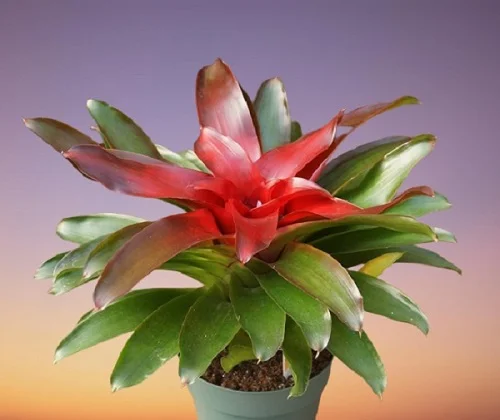
Botanical name: Neoregelia
Family: Bromeliaceae
Sufamily: Bromelioideae
Common name: Blushing Bromeliads
Origin
Neoregelia Bromeliads are native to the rainforests of South America.
Flower
Blushing Bromeliad may take 3-5 years to reach the flowering stage but the display may last upto 6 months. Once the flowering is over, the rosette of leaves begins to die and is replaced by offsets (pups) at the base of the plant which can be used to propagate new plants.
Are Neoregelia Bromeliads toxic?
No. Neoregelia Bromeliads are non-toxic to humans and pets as indicated by ASPCA. Blushing Bromeliads are safe for cats, dogs and other pets making them ideal to grow indoors.
However, the leaves bear short spines which may cause physical injury if handled with bare hands. Always wear gloves when handling this bromeliad to prevent injury.
Related: 15 Indoor Plants that are Safe for Cats and Dogs
Varieties
The most common of the Blushing Bromeliads is Neoregelia carolinae tricolor (Blushing Bromeliad) which blushes at the center when about to flower. With age the foliage becomes suffused with pink.
Neoregelia spectabilis (Fingernail Plant) is another of the Neoregelia Bromeliads which reddens at the leaf tips during flowering. Another popular variety is Neoregelia carolinae marechalii which displays magnificent colors from rosy red to vermilion or reddish purple and fading towards the tips at flowering.
Neoregelia Bromeliads differ from Nidularium Bromeliads (Bird's Nest Bromeliads) in that the latter have a central rosette of very short saw-edged leaves (Bird's nest) which turns bright-red at flowering time.
Where to Buy
Blushing Bromeliads are a perfect addition for your collection. Check them out on Etsy (Link to Etsy).
How to care for Neoregelia Bromeliads indoors
Caring for Neoregelia Bromeliads indoors, entails providing bright light (filtered light), average warmth of 18-280C, humidity of 60-70% and consistently moist, fertile, well-drained, orchid's potting soil coupled with fortnightly feeding during the growing season.
Blushing Bromeliads care requires regular pruning to keep them neat as well as provide space for the growth of pups. Repotting is not necessary as they have a small root system and once they flower, they die and leave behind pups. Keep reading for more on these growing conditions and how to achieve them.
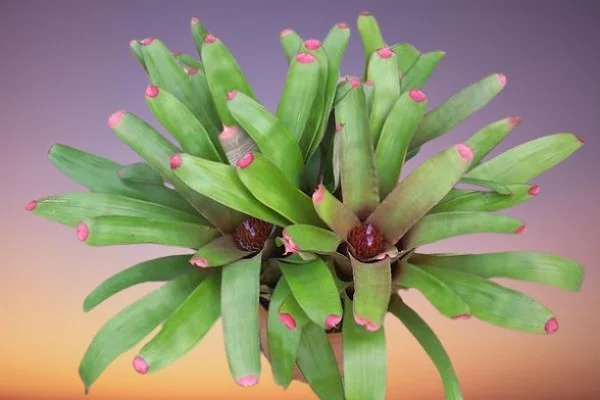
Neoregelia spectabilis (Fingernail Plant)
Watering
How often do you water a Blushing Bromeliad?
Blushing Bromeliads require the central 'vase' to be filled with water at all times. Empty and refill the 'vase' regularly to prevent growth of bacteria which may cause the water to become smelly.
Use only chlorine-free water like rain water or filtered water as these bromeliads are sensitive to chlorine and other chemicals that are dissolved in water.
Water the soil only when it dries to keep the roots moist. Avoid soggy soil as it can lead to root-rot and eventual death of the bromeliad.
Light Requirements
Do Blushing Bromeliads like sun or shade?
Blushing Bromeliads grow best in bright indirect light. Place infront of a large, well-lit window. Keep it away from direct sunlight to prevent scorching of the leaves.
If the natural lighting is not adequate, the growth will slow down and the plant may not bloom. Therefore, use a full spectrum grow light to supplement the light.
Occasionally rotate the pot to ensure that the plant receives adequate light on all sides for a balanced growth.
Temperature and Humidity
Blushing Bromeliad flourishes in an average warmth of 18-280C. However, to bring the bromeliad to flower requires temperatures above 260C.
Neoregelia Bromeliads blossom in a humidity of 60-70%. If the humidity is too low, the plant develops brown leaf tips. To elevate humidity, set the pot on a wet pebble tray or use a cool mist humidifier. Maintain good air circulation to prevent fungal diseases infestations.
Fertilizer
What kind of fertilizer for Blushing Bromeliads?
Feed your Blushing Bromeliads with a liquid fertilizer (foliar feed) every 2 weeks in the growing season (spring and summer). Do not feed in fall and winter as growth is minimal at this time and it may lead to fertilizer burn.
Potting Soil
The best soil for Blushing Bromeliads should be rich in organic matter, loose, free-draining, bark soil to prevent waterlogging while providing the required nutrients. Orchid potting mixes are ideal for these Bromeliads.
Repotting
Repotting Blushing Bromeliads is not necessary as the roots are tiny and are unlikely to fill the pot. Pot the bromeliad in a shallow, heavy pot to prevent it from toppling over as it can become top-heavy. Provide support to help keep it upright and prevent it from toppling over as it can become top-heavy. Check out these ceramic pots with drainage holes on Amazon.
Pruning
How do you prune a Blushing Bromeliad?
Pruning Blushing Bromeliad involves removal of dead leaves to keep the plant neat and to allow adequate room for the new plants to grow.
Cut the dead foliage at the base. Use a sharp, clean knife or a pair of pruning scissors to minimize injuries and diseases.
Blushing Bromeliad Propagation
Blushing Bromeliads (Neoregelia Bromeliads) propagation is done at the beginning of the growing season from offsets (pups) appearing at the base of the plant.
Propagating Blushing Bromeliads from offsets (pups)
- When the offset (pup) is several months old or 1/3 to 1/2 the height of mother plant, separate it from the mother by cutting with a sharp, clean pair of pruning scissors.
- Ensure the offset has some roots attached to it and plant the offset shallowly in loose, free-draining, bark soil.
- Use a shallow heavy pot to prevent the Bromeliad from toppling over as it can get top-heavy.
- Give it good support to prevent it from toppling over as its has a small root system.
- Place the set up in a warm, well-lit place until the new bromeliad is well established after which you can begin routine care.
Related Content: How to Propagate Bromeliads from Pups (Bromeliad Propagation from Pups)
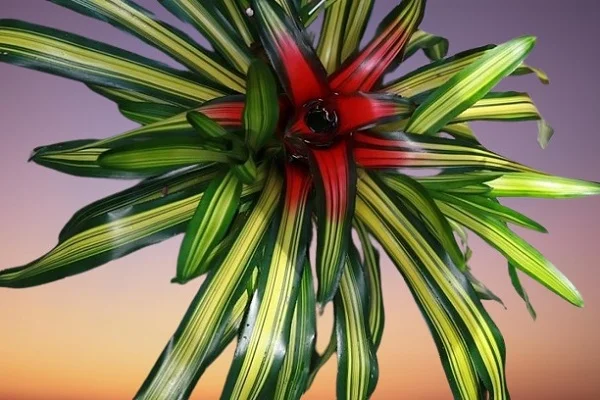
Neoregelia carolinae tricolor
Neoregelia Bromeliads Problems & Remedies
Blushing Bromeliads (Neoregelia Bromeliads) problems are yellow leaves, plant dying, drooping leaves, brown leaf tips, pale-brown leaf patches, pests and diseases. Keep reading for more on these problems, their remedies and solutions.
Yellow leaves
Why is my Blushing Bromeliad turning yellow?
Some of the causes of yellow leaves on your Blushing Bromeliad are too little light, soggy soil, temperature stress, low humidity, and nutrients deficiency.
How to fix it
Too little light: Move the plant in a brighter spot or instal a grow light if the natural lighting is not enough.
Soggy soil: Use a pot with a drainage hole and well-draining soil.
Temperature stress: Keep the plant away from drafts coming from AC units, drafty windows, heat sources, windy doors and others.
Low humidity: Use a wet pebble tray or a humidifier to increase humidity.
Nutrients deficiency: Feed the plant with a balanced, water-soluble fertilizer every 2 weeks in spring and summer.
Plant dying
Neoregelia Bromeliad is dying due to two possible reasons; root-rot and after blooming.
1. Root-rot which is promoted by soggy soil, if the Bromeliad has not flowered. It is characterized by yellowing and wilting leaves, rapidly followed by browning and plant collapse.
How to fix it
- Carefully slip the plant out of its pot and inspect the roots.
- Trim the brown-black, mushy roots and treat the healthy roots with a copper-based fungicidal solution as recommended by the manufacturer.
- Disinfect the pot with the fungicidal solution or use a fresh pot to repot the plant in fresh, well-draining soil.
- Do not water the plant immediately and keep it dry for 5-7 days before you can resume watering.
- Use a pot with adequate drainage hole and loose, orchid soil to prevent it from getting soggy.
- Cut down on watering in fall and winter as growth is reduced at this time; keep the soil slightly moist.
2. After blooming: If the bromeliad has bloomed then rotting and death of rosette which bore flower-stalk is natural to give room for the new plants.
How to fix it
Remove the dead foliage by cutting at the base with a clean knife or a pair of scissors to create space for the new plants.
Drooping leaves
Drooping leaves on Blushing Bromeliads are caused by underwatering, drafts, and pests infestation.
How to fix it
Underwatering: Keep the vase filled with water at all times. Water when the top soil dries out but never allow the soil to dry out completely.
Drafts: Keep the plant away from drafts emanating from hot air vents, AC units, hot stoves, windy doors among others.
Pest infestations: Regularly inspect the plant for these pests and take timely control measures.
Brown leaf tips
Brown leaf tips on Neoregelia Bromeliads are caused by dry air, salts buildup, and use of hard water.
How to fix it
Dry air: To increase humidity, set the pot on a wet pebble tray, use a humidifier or grow the plant in a well-lit bathroom, kitchen, laundry area and other moist areas in the home.
Salts buildup: Regularly flush out accumulated salts from the soil by running a stream of water through the soil until it drains through the drainage hole.
Use of hard water: Use chlorine-free water like rain water or filtered water.
Pale-brown leaf patches
Pale-brown leaf patches on Blushing Bromeliads are due to exposing the plant to direct sunlight. Shield it from direct sunlight or move it to a shadier spot away from direct sunlight.
Pests
Common pests on Neoregelia Bromeliads are scale insects and mealybugs which are prevalent in dry air conditions.
How to fix it
- Isolate the affected plant to prevent spread to other plants.
- Treat the infested plant with neem oil or insecticidal soap as per the manufacturers' recommendations.
- Regularly check between and underneath the leaves for these pests and carry out timely control measures.
- Keep the plant properly pruned and raise humidity to discourage pest infestations.
Diseases
Blushing Bromeliads are prone to leaf spot which presents as brown leaf patches surrounded by a yellow halo.
How to fix it
- Remove and burn the affected parts to reduce spread to the rest of the plants.
- Spray the affected plant with a systemic fungicide and ensure to cover all the parts with the fungicidal solution.
- Keep the plant on the dry side, do not mist it and ensure good air flow.
- Use a pot with good drainage hole and well-draining, chunky soil.
You liked it? Share on social media.
Related Content
Amazon Associates Disclosure
Homeplantsguide.com is a participant in the Amazon Services LLC Associates Program, an affiliate advertising program designed to provide a means for sites to earn advertising fees by advertising and linking to amazon.com.


